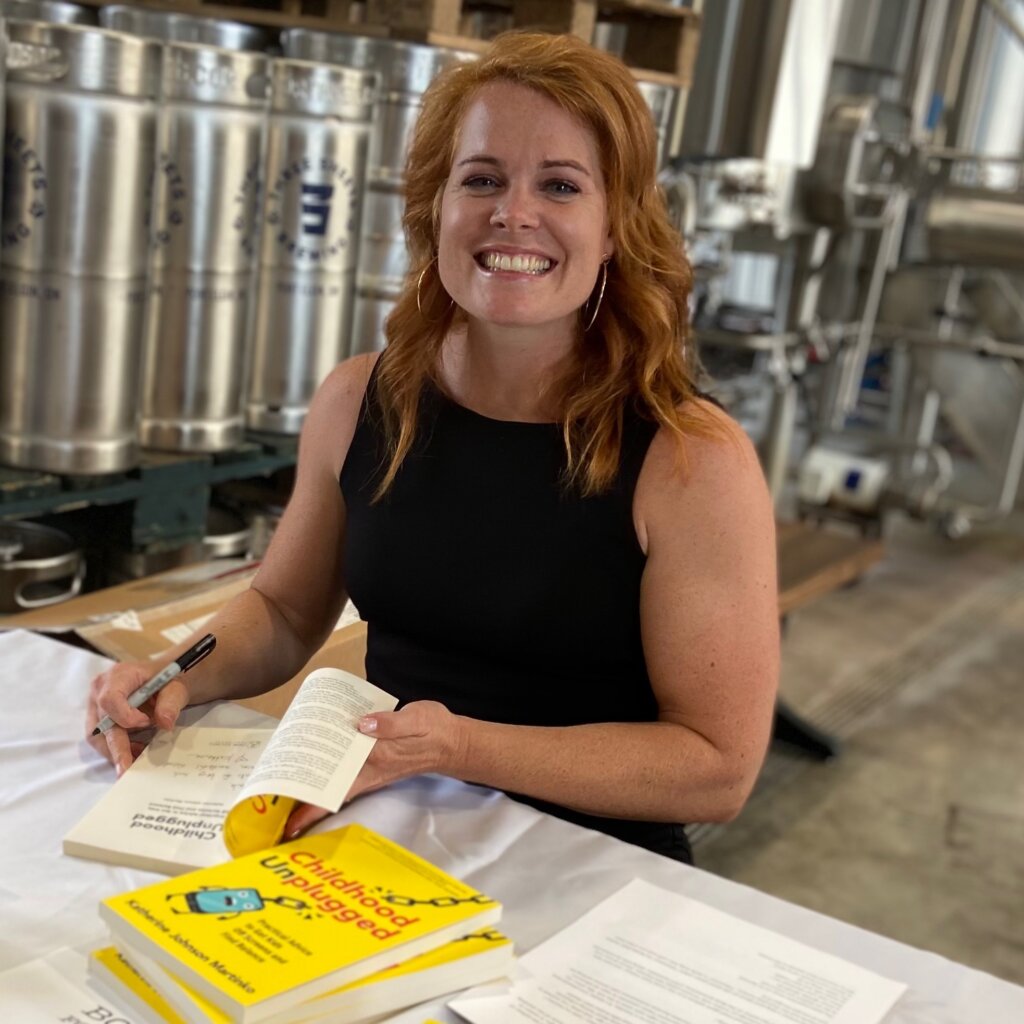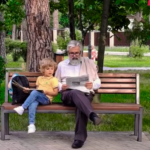






If You Curtail Your Kid’s Screen Time, What Can Fill the Void?
Today’s post comes to us from Katherine Johnson Martinko, author of Childhood Unplugged: Practical Advice to Get Kids Off Screens and Find Balance (New Society Publishers, 2023).
A Solution for Screen Time by Katherine Martinko
Are you worried about the amount of time your kid spends on screens?
You’re not the only one! Parents across the country are concerned about how much time and attention digital devices are draining from everything else in their kids’ lives—outdoor play, exercise, face-to-face conversations, reading books, studying, even sleeping.
Recent data confirm parental observations. A 2021 study by Common Sense Media found that 8- to 12-year-olds spend an average of 5.5 hours per day on devices. For 13- to 18-year-olds, that spikes to 8 hours, 40 minutes a day. While some of that time might be spent in positive, productive ways (not all screen time is bad!), it’s unlikely that all of it is. Those many hours are undeniably displacing other, more formative activities that kids need in order to develop well — or at the very least have a fun, play-filled, imaginative childhood. A childhood that can only be experienced once.
I literally wrote the book on this!
It is far easier to diagnose a problem than to offer a solution, but as the author of the new book Childhood Unplugged: Practical Advice to Get Kids Off Screens and Find Balance(New Society Publishers, 2023), I feel qualified to offer a hopeful solution to parents fed up with digital overload.
The main thing to remember is this: If you, as the parent, intend to take away or severely limit your kid’s screen time, then you have a responsibility to help them fill the void left behind. If kids are accustomed to spending upwards of eight hours on a phone each day, they’re bound to feel at loose ends, disoriented, and bored once it disappears. They will not immediately know what to do. That’s where free play comes in. You’ve got to help them fill that void with good, old-fashioned play.
Play is what children of all ages are hardwired to want and need to do. It is evolutionarily designed to grow competent, confident adults who know how to use their bodies, assess risk, communicate with others, explore new surroundings, and deal with some challenging interactions. Play may have been pushed aside in recent decades, but it’s still there, waiting to be rediscovered by children and parents alike.
Getting kids to play.
How do you promote free play – the kind kids do on their own, without constant adult supervision or assistance? Some suggestions:
Start by sending kids outside as much as possible and leaning hard on the outdoors to entertain them.
Take them to the park.
Fill your yard with loose parts, items with open-ended uses that can be endlessly reinvented. (Buckets, planks, balls, tarps.)
Invite friends over – or have your kids invite them. This gives them a chance to delve into imaginary games and group activities.
Cultivate independence so that older children can explore beyond your home and meet friends elsewhere.
Talk to neighbors about encouraging kids to get outside together.
De-schedule your family’s calendar to create space for free time and play. Take Let Grow’s advice to form play clubs where kids can gather and make their own fun. Ask your school to start a before or after school Play Club, too!
Rome wasn’t unbuilt in a day.
If you wish to curb phone use, your kids will have a whole lot of newly free time to fill, and play is your best bet for success. It’s what kids used to do, what they still need to do, and what they will figure out how to do, given some time, some stuff (including nature) and some friends (who don’t have to be their same age).
Strive to prioritize play in your child’s life, and the battle against devices will feel more manageable. Your child will be happier, healthier, and more active. Bonus: You’ll be happier and healthier too.

Katherine Johnson Martinko is a former senior editor at Treehugger. She has written extensively about free-range parenting, the importance of outdoor play, and digital minimalism. Katherine also writes a Substack newsletter called The Analog Family. Her writing has been published in the Globe and Mail, the Toronto Star, Motherly, Huffington Post, and Green Child magazine. She lives with her husband and three children in Ontario, Canada. Find her work at https://katherinemartinko.substack.com. Her new book is Childhood Unplugged: Practical Advice to Get Kids Off Screens and Find Balance (New Society Publishers, 2023).



When I was a kid, the only “screen time” was spent in front of our 19-inch black-and-white television set. If I spent more than an hour there, my mom would turn it off and tell me to “go outside and play”. That meant that I went outside, by myself, unaccompanied by her or any other adult. and either fooled around by myself in our front or back yard, or wandered the neighborhood looking for any other kids who might be out so we could get a football or baseball game started, or just play army, cowboys and indians, or ride around on our bikes. As we spent hours and hours in those kinds of activities, there were no adult eyes on us. Sometimes we just went to the park–nobody took us. We were free. It’s very simple. Just do it. Turn ’em loose. No book is necessary.